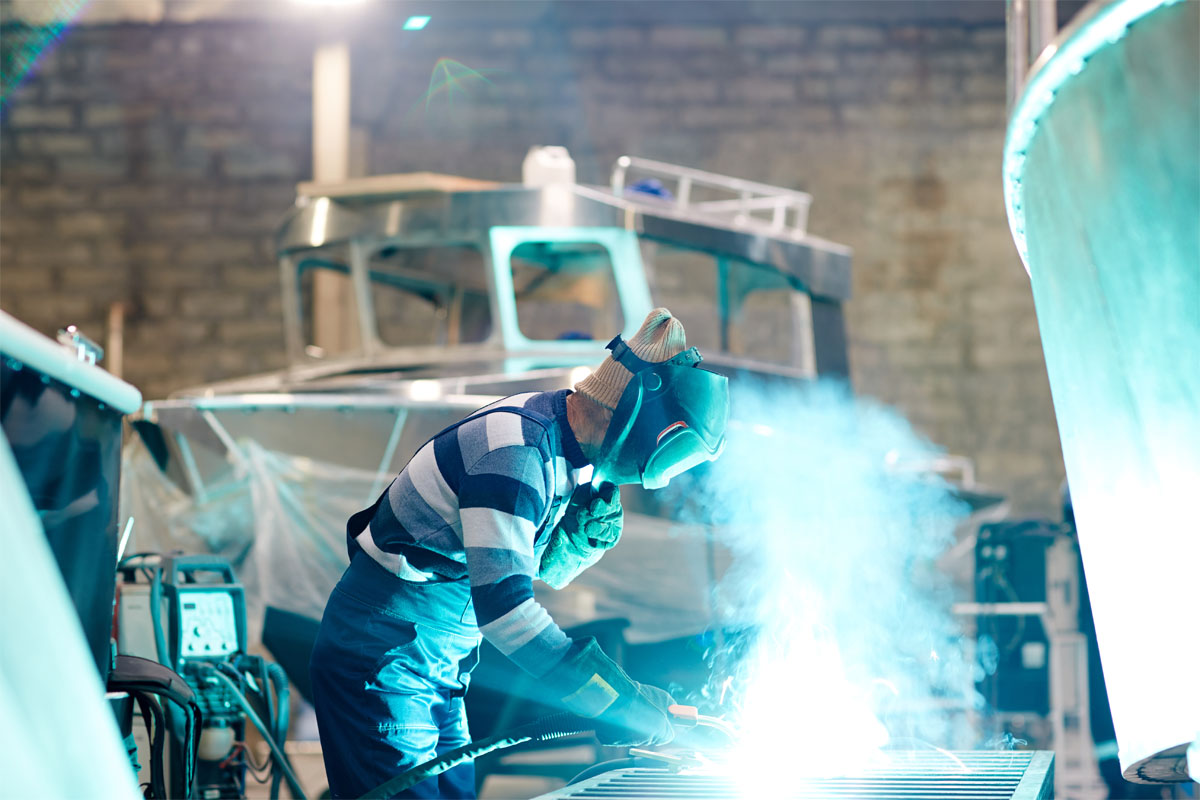Both TIG and MIG welding use an electrical arc and protective gas to join various metals. Whereas they are somewhat similar on the surface; each has their own unique features.
When welding techniques were unacceptable for joining aluminum and magnesium alloys in the 40s, metal inert gas (MIG) and tungsten inert gas (TIG) welding became a progressive solution. This achievement brought on to its popularity across various sectors to this day.
TIG is less forceful, and the utilization of filler material is discretionary, making it better for use on thinner metals. MIG allows for higher quality penetration on thicker metals from the combination of its protective gas, source of power and method.
MIG vs TIG – Pros and Cons of Each
Prior to you deciding which welding method to choose, examine the pros and cons of using TIG and MIG welding for your venture. Knowing this information is not only going to help you decide which one to use, but it is going to make you a better welder in general.
TIG Welding
Pros
- TIG welds are increased in quality.
- Filler material is discretionary.
- Foot pedal provides greater precision.
- TIG offers adaptability for a wide selection of materials.
Cons
- You require a clean metal surface prior to welding.
- It is a slow welding method.
- It requires skill and knowledge to attain high-quality welds.
- A TIG welder is more costly with added maintenance expenses.
MIG Welding
Pros
- Faster welding time.
- Welding equipment is less costly, and its materials are readily accessible.
- Easier for creating strong welds.
- You can weld at challenging angles.
Cons
- Their welds are not as beefy as TIG welds.
- Harder to manage the weld bead.
- Inability to weld thinner metals.
- Requires safeguarding from vapors.
TIG and MIG Welding Applications
Thickness
MIG welding is typically the best choice when handling thicker metals because it has higher penetration along with the feed wire delivered into the weld pool. It is usually utilized in manufacturing pressure containers and in the construction sector.
TIG welding is preferrable for thinner materials that are fragile and prone to shortcomings. Its applications comprise of pipe joints, automotive and aerospace fabrication.
Duration
The TIG method is typically short, as it is more suited for technical projects. For longer runs, particularly through production, the MIG method is usually the choice. MIG welding is favored for being less complex and for lower overall expenses.
Aesthetics
TIG welders are more appropriate for work pieces that require management of their heat intake. It is easier to achieve steady beads in the weld pool utilize this welding method. This is ideal for artwork, work pieces, and vehicle repairs.
People usually use MIG welding for quick welding when aesthetic finishes are not a priority. MIG is also decided on if the metals endure coating or post-processing.
Angle / Reach
A TIG welder is managed via its foot pedal, suiting it best for easily accessible angles and sections. This is most fitting through bench or shop work, in which the material is at an agreeable angle.
MIG welders are preferrable when welding at uncomfortable angles because you have a free hand to hold and manage the materials that require welding.
Environment
Because both TIG and MIG welding use protective gas, it is preferred to weld in a controlled environment, ideally indoors or in areas with slight wind.
In settings where it is unpreventable, you can choose to use flux-cored welding leads. The flux responds with the arc to form a protective gas that safeguards the weld. You need to adjust some machine variables for this to work and take into account the slag that is leftover.
Experienced Welders
MIG welding is easier to understand with its streamlined process. A novice can easily create good beads on a work piece. TIG welding requires a higher skill level and experience as it provides more adaptability in welding.
Being knowledgeable in both gives you an upper hand in choosing the right welding methods when doing various projects.
Automation
Technological developments allow automated devices to create MIG and TIG welds in fabrication and assembly. In comparison to manual welding, automated devices can repeatedly create consistent, precise welds at an accelerated rate.
ARTISTIC ALLOYS & DESIGN OFFERS CUSTOM METAL FABRICATION IN ARIZONA, CALIFORNIA, COLORADO, & MORE
Artistic Alloys & Design offers metal design and fabrication for the entire US! If you live anywhere in the Phoenix Valley and want to have some custom metal work done, Artistic Alloys & Design can craft any type of metal item you want. From entry doors to range hoods or stair railings we have precisely what Arizona businesses and homeowners are looking for.





